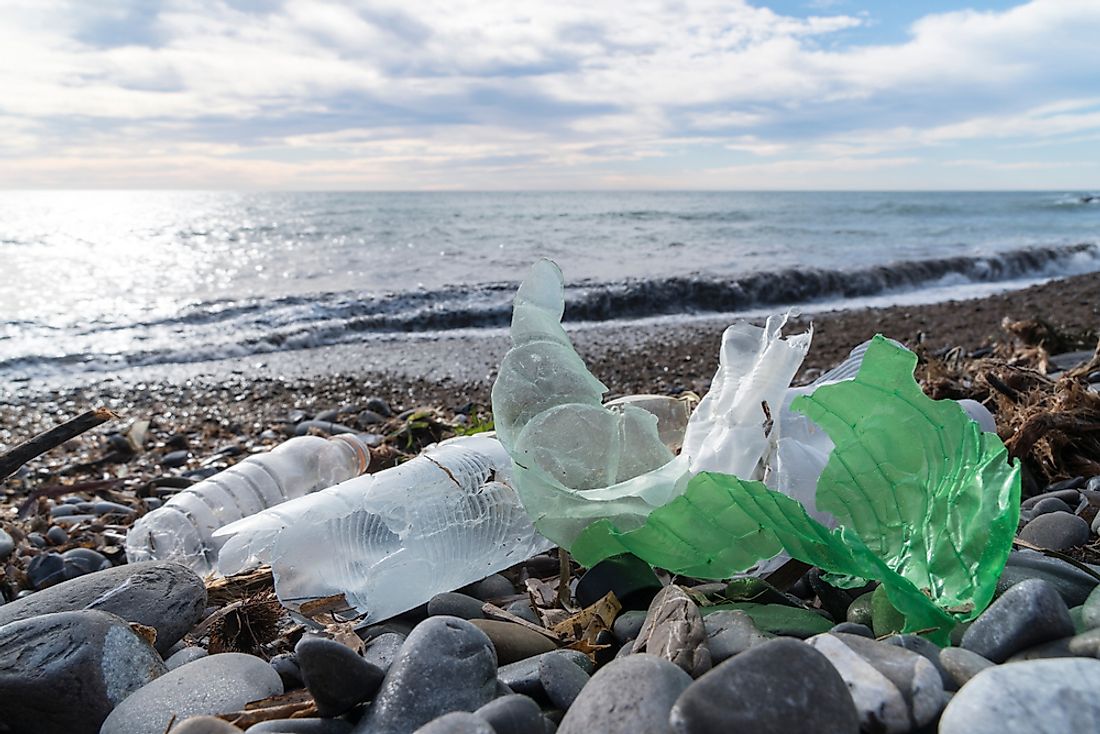The 10 Types of Litter Most Commonly Found on Beaches Around the World

Ocean trash has become a serious issue over the past couple years. It is estimated that 8 million metric tons of plastic enter the ocean every year endangering sea life and contributing to the creation of microplastics and the buildup of garbage patches such as the Great Pacific Garbage Patch. To combat this, the International Coastal Cleanup, established by Linda Maraniss and Kathy O’Hara in 1985, takes place annually on the third Saturday in September with the primary purpose of collecting and documenting the trash that littered the coastlines of oceans around the globe. In the past 30+ years, the annual event spread to 153 countries with the almost 12 million volunteers having collected almost 250 million pounds of trash. Below looks at the most common types of litter found on beaches during the 2017 International Coastal Cleanup.
The Most Common Types of Litter Found on Beaches
According to the data collected by the International Coastal Cleanup (ICC) in 2017, cigarette butts, food wrappers, plastic bottles and bottle caps, plastic grocery and other plastic bags, plastic beverage lids, straw, and stirrers, as well as plastic and foam take-out containers were the most common form of beach litter found in all ocean coastlines sampled.
Cigarette Butts
During the 2017 International Coastal Cleanup, a total of 2,412,151 cigarette butts were collected topping the list of the most common beach litter. Of this, 842,837 were collected in the United States, 390,637 in the United Arab Emirates, 353,025 in the Philippines, and 148,638 in Canada. These pose a significant environmental concern as the plastic used to create cigarette filters is not one that entirely degrades. In addition, cigarette butts are often mistaken for food by sea life which is of concern as they contain dangerous chemicals that are toxic to animals. They are often found in the stomachs of sick and dead fish, seabirds, dolphins, and sea turtles.
Plastic Waste
Plastic litter ranges from plastic bottles (1,569,135 collected), plastic bottle caps (1,091,107), plastic grocery bags (757,523), plastic bags (746,211), straws and stirrers (643,562), plastic takeout containers (632,874), beverage lids (624,878), as well as 1,933,146 smaller pieces of plastic. If all the data of these types of plastics are summed up together, plastic litter is the top ocean litter collected annually. This is concerning as plastic litter is extremely dangerous for marine life. Similar to cigarette butts, plastic is often mistaken for food and consumed by sea life causing illness and death. In addition, sea life often get entangled in larger plastics such as discarded fishing nets and drink can rings. Minuscule pieces of plastics, known as microplastics, have also been found in many times of sea life including fish and in drinking water, creating a poisonous food chain which eventually affects humans.
Food Wrappers and Foam Containers
In addition to plastic, food wrappers (1,739,743) and foam food take-out containers (580,570) were also within the top 10 items found during the coastal cleanup. In addition, 2,326,893 smaller foam pieces were collected. Styrofoam has a low recycling rate and as it floats, often gets carried down storm drams and out to sea. As styrofoam does not fully degrade, similar to plastics, it is thought that microscopic pieces of styrofoam remain in the water which is dangerous to both sea life and humans. In the United States alone, volunteers collected 345,241 food wrappers and 47,259 foam take-out containers during International Coastal Cleanup Day.
Growth of the International Coastal Cleanup
The International Coastal Cleanup event began in Texas with only a limited number of volunteers (approximately 2,800 people). Nevertheless, the organization has grown into a vast cleanup that involves national and international volunteers all focused on ensuring that the coastlines of the world's oceans are clean and free from all forms of litter. Over the past 30 years almost 12 million volunteers have scoured more than 360,000 miles of coastline in search of glass, plastic, foam, and larger waste.
The 10 Types of Litter Most Commonly Found on Beaches Around the World
| Rank | Beach Litter | Amount Collected (2017) |
|---|---|---|
| 1 | Cigarette Butts | 2,412,151 |
| 2 | Food Wrappers | 1,739,743 |
| 3 | Plastic Bottles | 1,569,135 |
| 4 | Plastic Bottle Caps | 1,091,107 |
| 5 | Plastic Grocery Bags | 757,523 |
| 6 | Other Plastic Bags | 746,211 |
| 7 | Straws and Stirrers | 643,562 |
| 8 | Plastic Take Out Food Containers | 632,874 |
| 9 | Plastic Beverage Lids | 624,878 |
| 10 | Foam Take Out Food Containers | 580,570 |











